Filler Selection Guide
| Adhesive Fillers ⇐ Highest Density/Highest Strength | Fairing Fillers Lowest Density/Easiest Sanding ⇒ | |||||
|---|---|---|---|---|---|---|
| Uses & Characteristics with epoxy resin/hardener mixture | 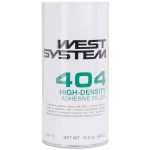 404 High-Density 404 High-Density | 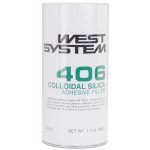 406 Colloidal Silica 406 Colloidal Silica | 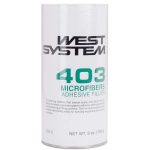 403 Microfibers 403 Microfibers | 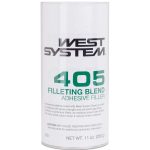 405 Filleting Blend 405 Filleting Blend | 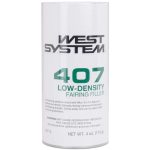 407 Low-Density 407 Low-Density | 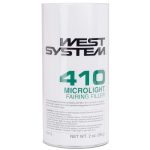 410 Microlight 410 Microlight |
| Bonding Hardware with Epoxy—Increase load capacity—Maximum strength | **** | *** | *** | ** | ||
| General Bonding (Mayonnaise Consistency) - Join parts with epoxy thickened to create a structural gap filler - strength/gap filling | *** | *** | *** | ** | * | |
| Bonding with Fillets (Peanut Butter Consistency) - Increase joint bonding area and create a structural brace between parts - smoothness/ strength | ** | **** | ** | *** | *** | |
| Laminating with Epoxy—Bond layers—Gap-filling, strong | ** | *** | **** | ** | ** | |
| Fairing with Epoxy—Fills voids—Easily sanded—Gap filling | *** | **** | ||||

Explore the differences between each of the six of WEST SYSTEM Fillers in greater detail.
Watch Now!
Adhesive Epoxy Fillers
Adhesive fillers are suitable for most epoxy bonding situations especially with high-density materials like hardwoods and metals. Adhesive filler mixtures cure to a strong, hard-to-sand cured epoxy plastic useful in structural applications like general bonding, filleting and hardware bonding.
Fairing filler epoxy mixtures cure to light, easily sandable material that is generally used for cosmetic or surface applications like shaping, filling or fairing. Seal all faired surfaces with epoxy before painting.
Epoxy Additives
Additives are used to give epoxy additional physical properties when used as a coating. Although additives are blended with mixed epoxy in the same two-step process as fillers, they are not designed to thicken the epoxy. See Additives & Pigments. Follow the mixing instructions on the individual additive containers when blending these products into your epoxy resin/hardener mixture.
General use filler selection may be based on the epoxy handling characteristics you prefer. Fillers may also be blended to create epoxy mixtures with intermediate characteristics.
Filler Buying Guide
Quantity of mixed epoxy required for consistency:| Epoxy Filler | Package Size | Package Weight | Epoxy filled to Ketchup Consistency | Epoxy filled to Mayonnaise Consistency | Epoxy Filled to Peanut Butter Consistency |
|---|---|---|---|---|---|
 | 403-9 403-28 403-B | 6.0 oz 20.0 oz 20.0 lb | 3.8 qt 3.2 gal 48.0 gal | 2.5 qt 2.0 gal 32.0 gal | 1.0 qt .9 gal 15.3 gal |
 | 404-15 404-45 404-B | 15.2 oz 43.0 oz 30.0 lb | 1.1 qt 3.2 qt 8.5 gal | .8 qt 2.4 qt 6.3 gal | .6 qt 1.8 qt 4.7 gal |
 | 405 | 11.0 oz | .8 qt | .6 qt | .5 qt |
 | 406-2 406-7 406-B | 1.7 oz 5.5 oz 10.0 lb | 1.3 qt 1.1 gal 27.0 gal | .9 qt 3.0 qt 16.0 gal | .5 qt 1.7 qt 6.0 gal |
 | 407-5 407-15 407-B | 4.0 oz 12.0 oz 14.0 lb | .5 qt 1.7 qt 6.0 gal | .4 qt 1.3 qt 4.8 gal | .3 qt 1.0 qt 3.7 gal |
 | 410-2 410-7 410-B | 2.0 oz 5.0 oz 4.0 lb | 1.2 qt 3.0 qt 8.9 gal | .9 qt 2.4 qt 7.2 gal | 0.7 qt 1.8 qt 5.6 gal |
